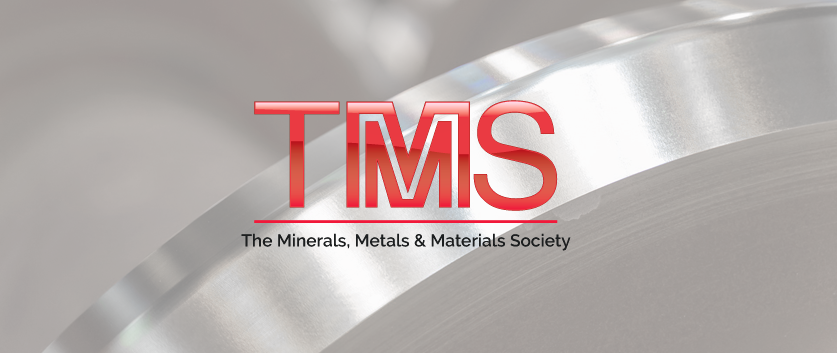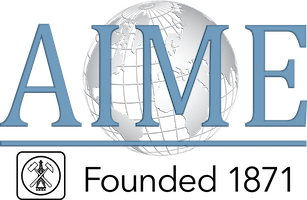
AIME Provides $10,000 Sponsorship for 2017 TMS Bladesmithing Competition
Bladesmithing competition invigorates student participation in TMS
Article by by Robert Berlin
The sword and the knife have a special mythological place in human experience. While they may not be useful today as weapons, they continue to appeal and find places in movies, games and in the iconography of our lives.
The Sword of Attila the Hun was purported to be sent to him by the gods.
Honjo Masamune, the Japanese Samurai sword was thought to have the power of discernment and is believed to be the finest Japanese sword ever made.
The kukri knife became emblematic of the world's fiercest fighters, the Brigade of Gurkhas.
And, of course, Excalibur, the legendary sword of King Arthur attributed with magical powers and the symbol of Great Britain's sovereign right.
So almost a decade ago when a few members of The Minerals, Metals & Materials Society began looking for ways to increase and sustain engagement and participation in college student members, bladesmithing looked like an interesting subject to explore.
They have been totally surprised by the response.
A Competition is Born
Senior Managing Consultant at SEAL Laboratories Dr. Dana Medlin is accepted as the person who got things rolling. When he was a professor at the South Dakota School of Mines & Technology he began a blacksmithing club called Hammer'In. Funding for blacksmithing tools and an enclosed trailer that could transport equipment to local schools for exhibits and events was funded by Materials Engineering Alumnus Craig Willan of Omega Research in Justin, Texas.
But a PBS NOVA episode about the making of a Samurai sword inspired them even further. Professors worked together to incorporate the making of a Samurai Sword into the capstone design experience where students learned to concentrate local iron ore, reduce that ore to iron, form a blade and then temper and finish the blade.
Recently-elected TMS President and Professor at SDSM&T, Dr. Stan Howard, humbly chuckles when he tells the story today.
"At the beginning, I was not supportive of blacksmithing at our university," he said. "I thought it was too primitive and retrograde."
To his amazement, the activity became so popular professors had to find ways to limit the amount of time students could spend in the facility.
In 2008, faculty wondered whether a bladesmithing competition could inspire student members of TMS in the same way the Ceramic Mug Drop Contest inspires Materials Advantage students during the Materials Science & Technology meeting every year. The effort didn't quite take off, though, until TMS Executive Director Jim Robinson resurrected the idea in 2012 after watching the same NOVA special that had inspired the professors in South Dakota years earlier.
The initial doubter-turned-champion, Dr. Howard, was asked to lead the effort to create a student bladesmithing competition. The idea was to invite students to produce a knife or sword blade 20-120cm long, formed extensively by hand hammering or trip hammer forging. The blades could be made of any material and could be smoothed, polished, sharpened by any mechanical means. The entries had to include a video showing the creative process, a characterization report and a poster.
To avoid safety and weapons issues on campus and at the exhibit hall, blades could not be sharpened.
Howard said the initial working group consisted of Professor Garry Warren from the University of Alabama, Professor Mark Schlesinger from the University of Missouri at Rolla, and Professor Michael West at SDSM&T.
"We thought that within three or four years it would build up," he said, "but it took off immediately."
Nineteen teams participated in the first-ever competition held during the TMS Annual Meeting at Disneyworld in Orlando, Florida, in 2015. The variety and number of entries surprised the competition's leaders.
"They really got into the history of their blades," Warren explained.
The first-place winning team from Oregon State University, for example, submitted a Bowie Knife made using a propane-fueled forge and created from a billet of forge-welded Damascus steel. It consisted of 24 alternating layers of AISI 1095 and 15N20 steel alloys.
The Bowie knife was made famous in the early 19th century in America by Jim Bowie who used this type of knife in a famous brawl known as the Sandbar Fight. The brawl was heavily reported by national media at the time and later when he fought at the Alamo, his knife played an iconic role in the national narrative.
Second-place winners from the University of Florida submitted a skinner knife, while other entries included a scimitar, a kukri, pata sword, cusped falchion sword and a khanjar.
With the success in 2015, Howard, Warren and many others worked to establish a Bladesmithing Symposium that was held at the 2016 TMS Annual Meeting in February in Nashville, Tennessee.
Again the response was surprising. In Nashville, 17 student teams presented their bladesmithing projects and included a wide variety of ideas, such as:
· A simulated meteoric blade presented by Cameron Crowell from Virginia Polytechnic Institute & State University,
· A presentation about building and using a bloom foundry by students from the Colorado School of Mines, and
· A project by Carnegie Mellon University Doctoral Student David Sapiro about making a Viking Sword.
Why Student Participation is Important
Dr. Jeffrey Wadsworth, chief executive officer of the Battelle Memorial Institute in Ohio, was the keynote speaker for this year's Bladesmithing Symposium.
"Competition drives more innovation and hard work," he said after announcing the creation of the Wadsworth-Sherby Bladesmithing Grand Prize award that will reward future student bladesmithers in what is becoming an integral part of the TMS Annual Meeting.
The first-place winner of each Bladesmithing Competition wins $2,000, while second-place winners receive $500, third-place winners receive $250 and honorable mention receives $100.
"We're always looking to draw more people into the engineering disciplines," Wadsworth continued. "The country needs it. We have a shortening supply of STEM-trained (Science, Technology, Engineering & Mathematics) people."
Wadsworth sees that the competition provides a platform that allows young people to explore both the past and the future while trying their hands at making something tangible.
"And it involves very sophisticated metallurgy," he added. "Standing temperatures, time, forging, strains, cycling of different materials through temperature ranges, reproducing ancient ways of making steels or meteoric irons. In doing this, they learn an awful lot about metallurgy. This is just a nice way to encourage people into the field."
Now that he's president of TMS, Howard also thinks about the big picture for that organization. How does this competition fit into the larger TMS strategic plan?
Actually, it fits pretty well, he said.
In 2014 TMS leadership announced their strategic plan to guide the society in its growth and development through 2018. That plan calls for five goals, including:
1. Advance diversity and inclusion in the minerals, metals and materials profession;
2. Accelerate industrial engagement in TMS;
3. Globally expand the portfolio of international activities;
4. Advance materials solutions for energy and environmental challenges; and
5. Be the natural home and advocate for materials and manufacturing innovation.
Students who research blades made from distant cultures are certainly learning more about diversity and inclusion. Industry has proven to be instrumental in helping students acquire materials and equipment to complete their projects, which has great potential to build upon. And projects like this help students to expand their creativity in ways that may solve some of the world's biggest problems in the future.
With a membership of more than 13,000 people living in 94 countries on six continents, TMS focuses on the entire range of minerals, metals and materials science and engineering from minerals processing and primary metals production to basic research and the advanced applications of materials.
More than 5,000 students are part of the Materials Advantage student program.
Student Reactions
Cameron Crowell learned about the 2015 competition late but scrambled to create a project to enter into the contest. He pulled together a team including Peter Kim, Christian Birkett and Adam Humphrys. Together they decided to create a bronze sword.
"The thing about a bronze sword is that you don't need to heat it up," he said explaining that his team had limited supplies and equipment to work with initially. "It took about three to four months to make and even though we didn't place at all, it was really good for our department. People still ask about the sword."
One of his favorite memories from the competition, however, was carrying their sword through Disneyworld in a violin case.
"You can't just walk around with a blade at Disneyworld in Orlando," he said laughing. "So I had a violin and I was thinking the sword was kind of the same size as the violin case. Here I am walking into a resort in Orlando carrying an unsharpened bronze sword in a violin case. I felt like a gangster in the 30s."
This year he presented his research into creating a sword from simulated meteroic metals, but while he was at the Annual Meeting he met someone who may be able to help him purchase real meteoric materials from China.
Cameron said he's already working to get his former partners to form a team for next year's TMS Bladesmithing Competition in San Diego. Cameron, who is primarily interested in a career in the private space industry, was an undergraduate student during the 2015 competition but has since begun graduate school.
"To keep this going, I want to get a sophomore and junior on the project team too," he said. Maybe this is the beginning of a tradition.
TMS President Howard admits it's impossible to measure the effect this competition has had on student membership, but he's not worried about that too much. He sees the impact at a more personal level.
"Probably the biggest effect is on student attitude and sense of purpose and belonging," he said. "Students involved in such activities are more likely to succeed."
Doctoral Student David Sapiro agrees the competition has had an impact on him personally.
"This allows me to get a well-rounded understanding of metallurgy," Sapiro said. "I understand the chemistry of it. I understand the physics of it. I understand the metallurgy of it. I've really incorporated it into my daily life."
So much so, that he has built his own foundry at his home where he does metalworking and blacksmithing in his spare time. He learns the science at the university, then practices the craft at home.
The Future of the Competition
Because the response has been so overwhelmingly positive, TMS leadership agreed to incorporate the competition into the Annual Meeting's permanent program lineup. During even years they will hold a symposium where students can present the scientific research part of the program. During odd years they will hold a blade competition where students can show off the tangible results of their research.
Warren said a TMS committee was formed in the past year and met for the first time in Nashville to begin the work of formalizing the Bladesmithing program.
"Last year we had some issues with shipping and things like that," Warren said, recalling Cameron's experience carrying his bronze sword through Disneyworld in a violin case.
There are other challenges to overcome, though, like finding judges for the competition, refining the rules with safety in mind, announcing and vetting submissions and finding sponsors to fund the program. With the popularity of the program so high, the committee needs to work quickly.
Warren said the committee expects to begin announcing the call for Bladesmithing competition submissions in April or May, so students who are coming on campus in the Fall can get themselves organized in time to participate. The TMS Annual Meeting will be held in February 26 through March 2, 2017 in San Diego.
View all the videos from the 2015 Bladesmithing Competition.

